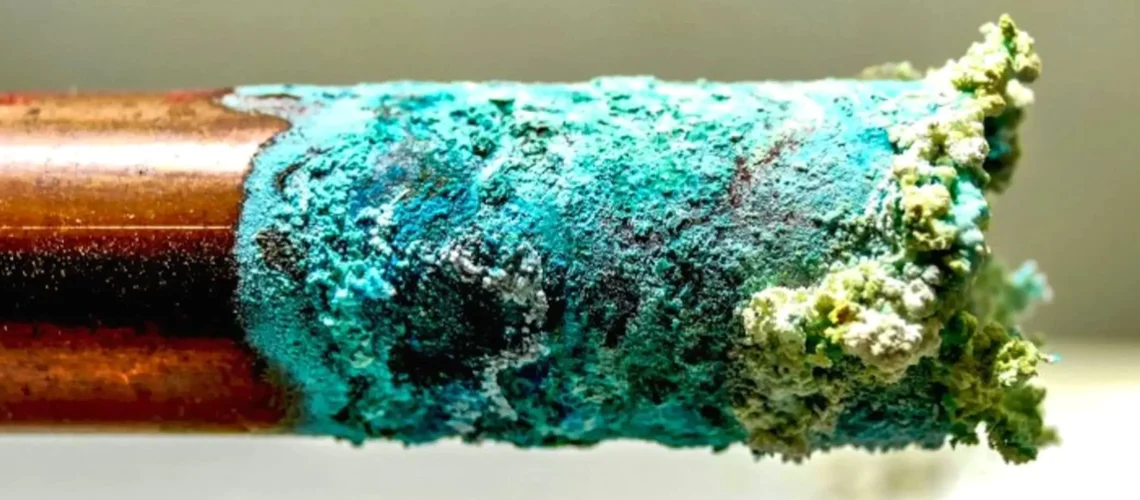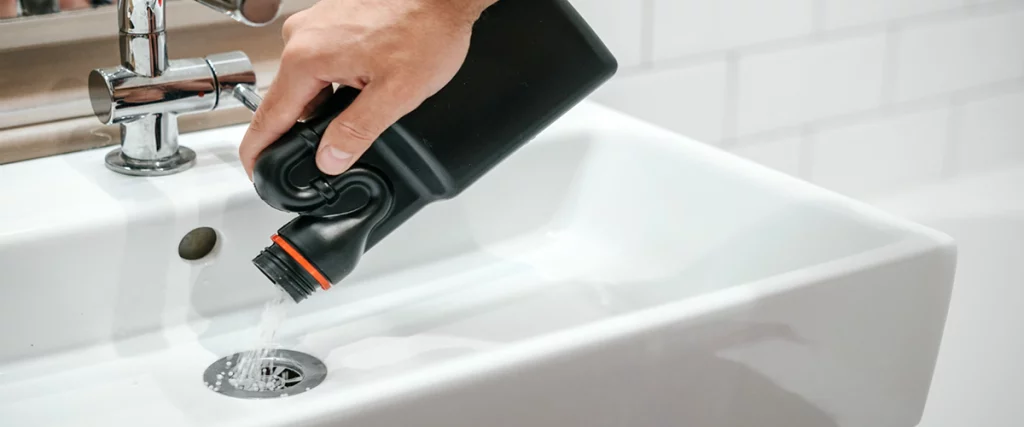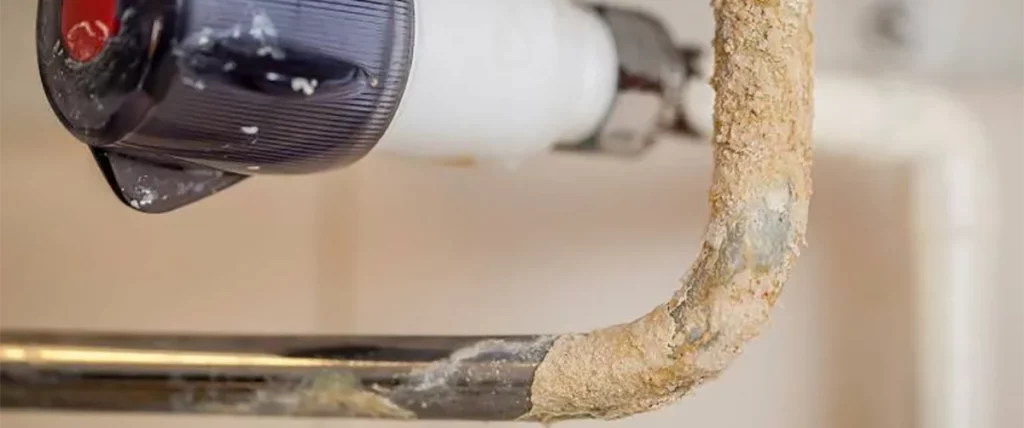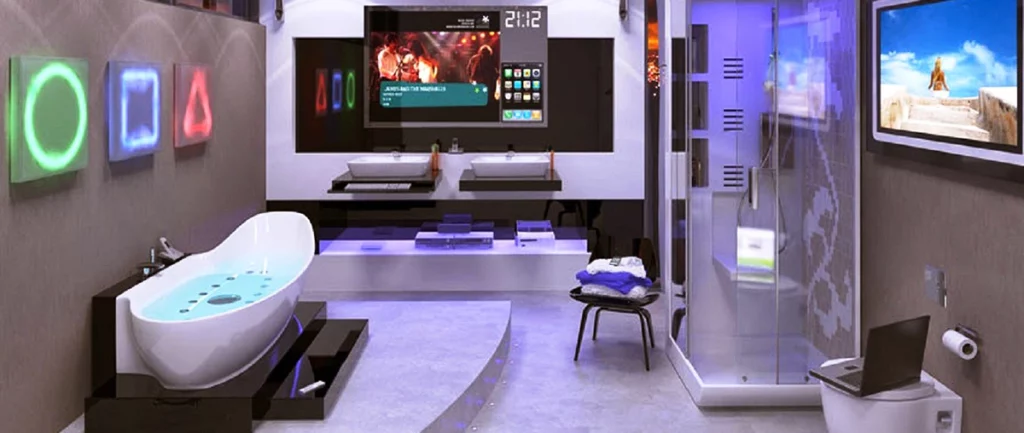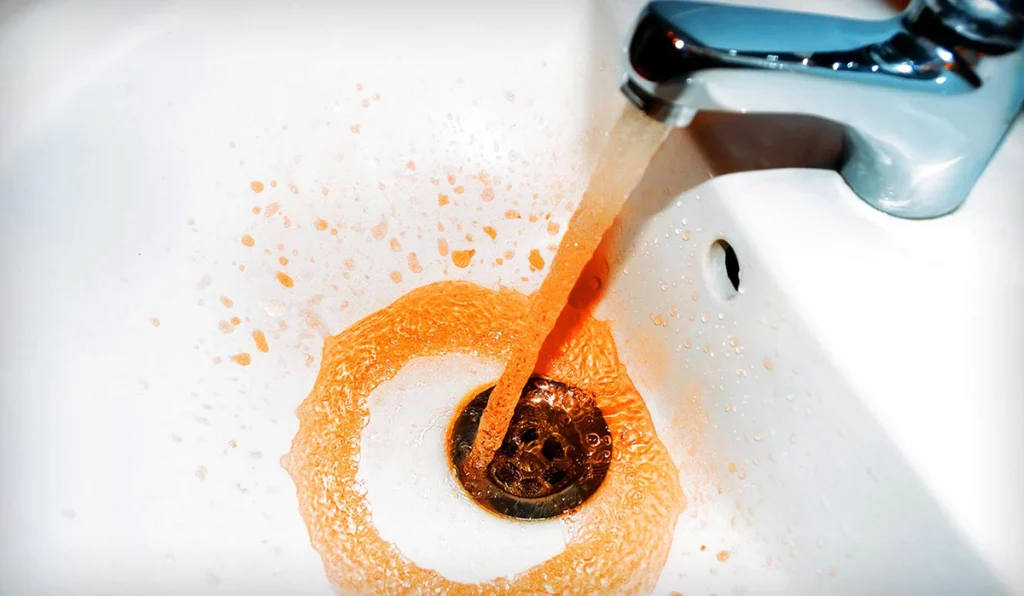If you’ve noticed your copper pipes turning green, you’re likely wondering what causes this discoloration and whether it could impact your home. The greenish tint on copper pipes is often due to a process called oxidation, which can occur in certain conditions, such as high humidity or exposure to specific chemicals in the water. In this article, we’ll explore why copper pipes get green, what the green buildup on copper pipes means for your water quality, how to safely clean and maintain them, and steps you can take to prevent green corrosion. Whether you’re looking for a DIY solution or considering professional help, we’ve got you covered.
Contents
- 1 Causes of Copper Pipe Discoloration
- 2 Impact on Water Quality
- 3 Preventative measures to prevent copper pipes from turning green
- 4 DIY Solutions for Copper Pipe Discoloration
- 5 Professional Assistance for Copper Pipe Discoloration
Causes of Copper Pipe Discoloration
Copper pipes may undergo discoloration due to chemical reactions with water, corrosion, and environmental factors. Understanding these causes is crucial for addressing the issue effectively.
Copper pipe discoloration is a common issue that homeowners may encounter, and understanding the causes behind this phenomenon is crucial for effective resolution. The following factors contribute to the discoloration of copper pipes:
1. Chemical Reactions with Water
One primary cause of copper pipe discoloration is the result of chemical reactions with water. The presence of certain minerals and substances in water can lead to a reaction with the copper, causing it to develop a greenish tint. Factors such as high mineral content, acidity, or alkalinity of the water can play a role in this reaction.
2. Corrosion and Oxidation
Corrosion is another significant factor contributing to the discoloration of copper pipes. When copper comes into contact with oxygen and moisture over time, it undergoes oxidation. This process forms copper oxide, commonly known as tarnish, resulting in a greenish or bluish hue on the surface of the pipes.
3. Environmental Factors
External environmental conditions can also impact the appearance of copper pipes. Exposure to elements like air pollution, humidity, and certain chemicals in the surroundings can accelerate the tarnishing process. In areas with high humidity or industrial activities, copper pipes may be more prone to discoloration.
Impact on Water Quality
The green tint in copper pipes might raise concerns about water quality. We’ll explore the potential health implications and effects on plumbing systems associated with this discoloration.

The greenish tint that copper pipes sometimes develop can raise concerns about water quality in residential plumbing systems. Understanding the potential impact is essential for homeowners to address the issue effectively.
- Health Concerns
While the green colour itself may not pose an immediate health risk, it can be an indicator of underlying problems. Copper pipe discoloration is often associated with corrosion or oxidation, which may lead to the release of copper particles into the water. Elevated levels of copper in drinking water can have health implications, including nausea, vomiting, and gastrointestinal discomfort.
It’s crucial to note that the severity of health concerns depends on the concentration of copper and individual sensitivity. Regular water testing can help determine if copper levels exceed recommended limits, allowing homeowners to take appropriate actions to safeguard their health.
- Effects on Plumbing Systems
Apart from health considerations, copper pipe discoloration can have adverse effects on the plumbing infrastructure. Corrosion and oxidation compromise the structural integrity of the pipes, potentially leading to leaks and reduced water flow. In severe cases, untreated copper pipe issues may result in the need for extensive repairs or even complete replacements.
Homeowners should be vigilant about any changes in water colour and quality. If copper pipe discoloration is detected, seeking professional evaluation and intervention is advisable. Prompt action can prevent further deterioration of water quality and ensure the longevity of the plumbing system.
Preventative measures to prevent copper pipes from turning green
Proactively addressing copper pipe discoloration involves measures like water quality testing, maintaining pH levels, and installing protective coatings. These actions can prevent the issue from arising in the first place.
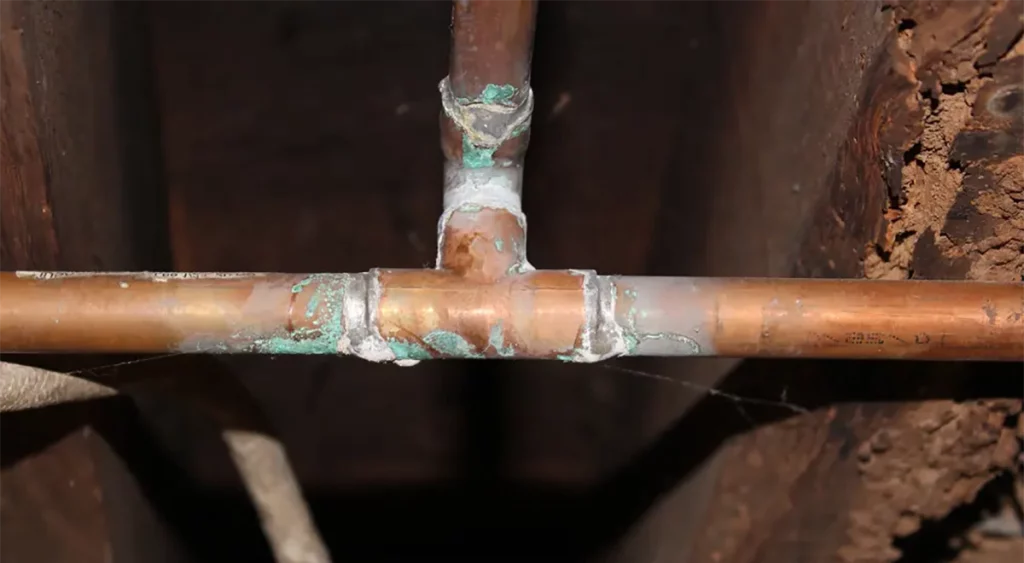
| Preventative Measure | Description |
| Water Quality Testing | Regularly testing water quality helps prevent green discoloration on copper pipes. By understanding mineral content, pH levels, and impurities, homeowners can address potential causes of copper pipe corrosion. Professional water testing ensures consistent water quality compliance. |
| pH Level Maintenance | Maintaining balanced pH levels in water is crucial in reducing copper corrosion. Using water treatment systems or additives to regulate pH helps minimize the risk of green buildup and oxidation on copper pipes. |
| Installation of Protective Coatings | Applying protective coatings on copper pipes forms a barrier against external elements like air, moisture, and pollutants. Coatings prevent direct contact with these factors, reducing oxidation and green corrosion on copper pipes. |
| Regular Maintenance Practices | Routine plumbing maintenance helps prevent discoloration by allowing for early detection of corrosion, leaks, or green residue on copper pipes. Cleaning with mild solutions and soft brushes can maintain pipe appearance and prevent buildup. |
| Environmental Considerations | Protecting copper pipes from environmental factors like humidity or pollutants helps prevent copper pipe oxidation. Installing insulation and reducing exposure to industrial elements minimizes the risk of green patina on copper pipes. |
DIY Solutions for Copper Pipe Discoloration
Copper pipes turning green can be a common issue, but homeowners can take proactive steps to address and prevent discoloration with simple do-it-yourself (DIY) solutions. Here are effective DIY measures to maintain the integrity of your copper plumbing:

Natural Cleaning Agents
Lemon and Salt Paste:
- Create a mixture of lemon juice and salt to form a paste. Apply it to the affected areas of the copper pipes, gently scrubbing with a soft cloth. The acidity of the lemon helps dissolve tarnish, restoring the copper’s shine.
Vinegar and Baking Soda Solution:
- Mix equal parts vinegar and baking soda to form a cleaning solution. Apply it to the discoloured areas, allowing the mixture to sit for a few minutes. Scrub with a non-abrasive brush or cloth, then rinse thoroughly.
Regular Maintenance Practices
Soft Brushes and Mild Detergents:
- Incorporate soft brushes and mild, non-abrasive detergents into your regular maintenance routine. Periodically clean copper pipes with these gentle solutions to prevent the build-up of tarnish.
Microfiber Cloths:
- Use microfiber cloths for regular cleaning to avoid scratching the surface of copper pipes. These clothes are effective in removing dust and preventing the onset of discoloration.
Protective Measures
Beeswax Coating:
- Apply a thin layer of beeswax to copper pipes to create a protective barrier against environmental elements. This natural coating helps prevent oxidation and slows down the tarnishing process.
Olive Oil Polish:
- For a natural sheen, apply a small amount of olive oil to a soft cloth and gently rub it onto the copper surface. This not only enhances the appearance but also adds a layer of protection.
Environmental Awareness
Avoid Harsh Cleaning Products:
- Steer clear of abrasive cleaning products that may accelerate copper tarnishing. Opt for mild and eco-friendly alternatives to maintain the health of your plumbing system.
Protect Pipes from Moisture:
- Address any leaks promptly and insulate copper pipes to protect them from excessive moisture. Moist conditions can expedite the oxidation process, leading to discoloration.
Professional Assistance for Copper Pipe Discoloration
While DIY solutions are valuable for maintaining copper pipes, certain situations may require the expertise of professionals. Seeking professional assistance is crucial for accurate diagnosis and effective resolution of copper pipe discoloration. Here’s what homeowners should consider:
Importance of Expert Evaluation
Professional Inspection:
- Engage the services of a qualified plumber or plumbing professional for a comprehensive inspection of your copper plumbing system. Professionals can identify the root cause of discoloration, whether it be corrosion, oxidation, or other factors.
Water Quality Testing:
- Professionals can conduct thorough water quality testing to determine if any impurities or high mineral content is contributing to copper pipe discoloration. This precise analysis aids in formulating targeted solutions.
Copper Pipe Restoration Services
Advanced Cleaning Techniques:
- Professional plumbers have access to advanced cleaning techniques that go beyond DIY solutions. They may use specialised equipment and solutions to restore the original appearance of copper pipes effectively.
Surface Protection Coatings:
- Plumbing professionals can apply professional-grade protective coatings to copper pipes, providing a durable shield against environmental factors. This preventive measure helps to prolong the life of the pipes and prevent future discoloration.
In conclusion, understanding why copper pipes turn green is the first step towards effective resolution. Whether through preventive measures, DIY solutions, or professional assistance, addressing this issue is crucial for maintaining a healthy plumbing system.
Protect your home’s plumbing from green corrosion! Contact POM Plumbing today for expert guidance on preventing and treating copper pipe discoloration. Keep your pipes clear and your water safe—schedule a consultation now!
FAQs
Regular maintenance, water quality testing, and pH level monitoring can prevent copper pipe discoloration.
While the green colour itself is not harmful, it may indicate corrosion, potentially affecting water quality. Professional evaluation is recommended.
Yes, using natural cleaning agents and regular maintenance practices can be effective DIY solutions.
Costs vary depending on the extent of the issue. Repair costs may be lower than complete replacement, but long-term investment in quality materials is advisable.
Consider recycling and repurposing copper pipes, and stay informed about sustainable plumbing practices.



